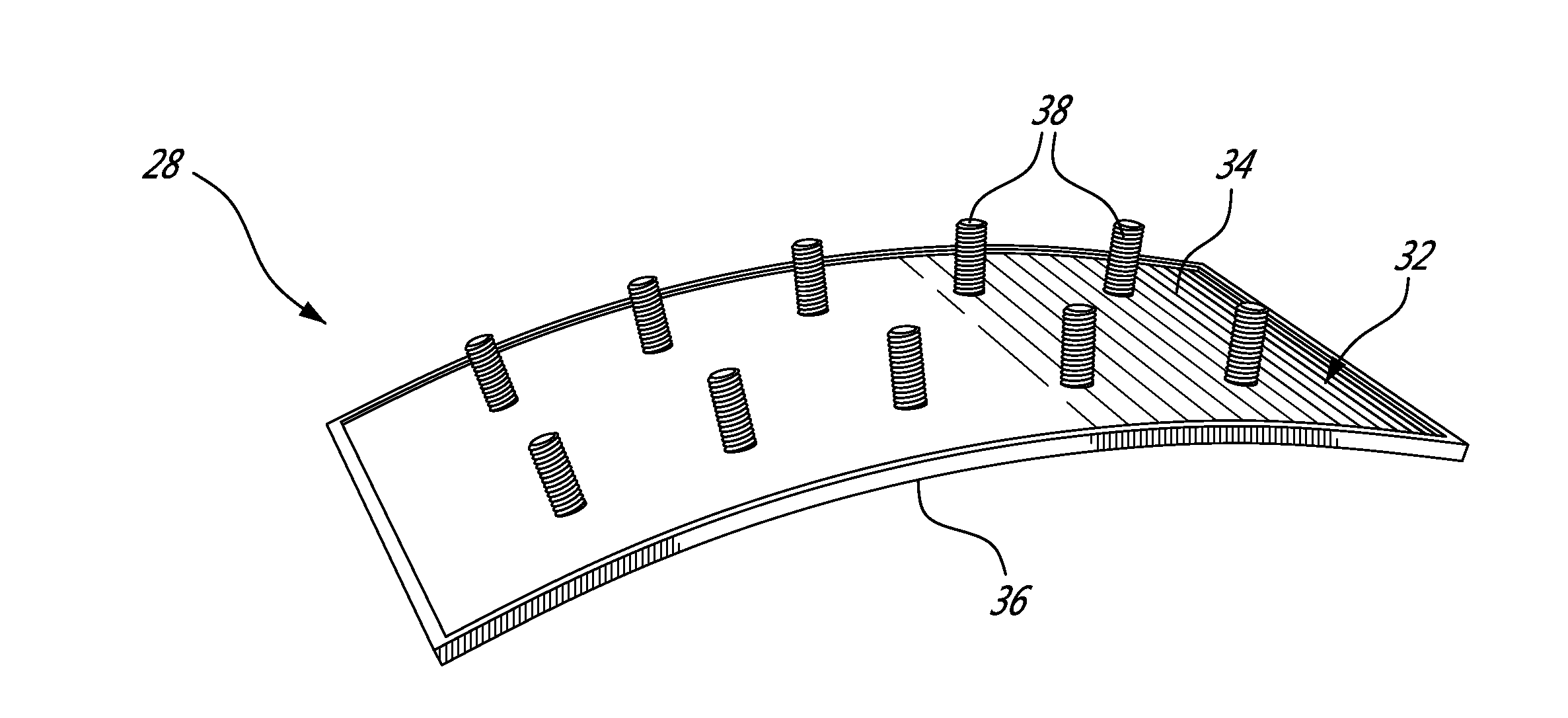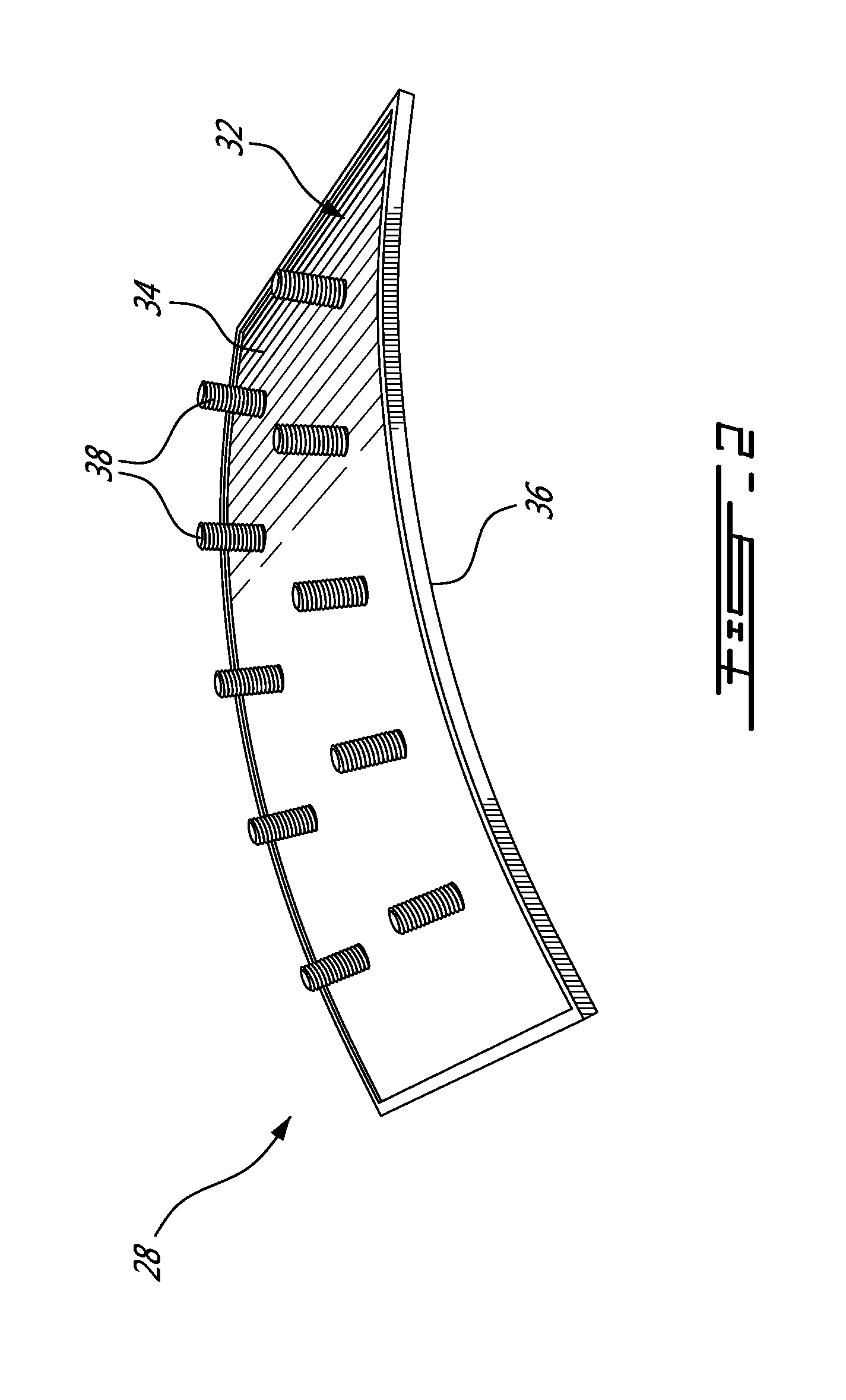Method of forming a component from a green part
a technology of green parts and components, which is applied in the direction of turbines, machines/engines, stators, etc., can solve the problems of undesirable and/or impractical use of powder injection molding to manufacture components such as green parts, and relatively difficult molds
- Summary
- Abstract
- Description
- Claims
- Application Information
AI Technical Summary
Benefits of technology
Problems solved by technology
Method used
Image
Examples
Embodiment Construction
[0015]FIG. 1 illustrates a gas turbine engine 10 of a type preferably provided for use in subsonic flight, generally comprising in serial flow communication a fan 12 through which ambient air is propelled, a compressor section 14 for pressurizing the air, a combustor 16 in which the compressed air is mixed with fuel and ignited for generating an annular stream of hot combustion gases, and a turbine section 18 for extracting energy from the combustion gases.
[0016]The combustor 16 is housed in a plenum 17 supplied with compressed air from compressor section 14. The combustor 16 typically comprises a combustor shell 20 defining a combustion chamber 21 and a plurality of fuel nozzles 22 for atomizing fuel, which are typically equally circumferentially distributed on the dome end panel of the combustor shell 20 in order to permit a substantially uniform temperature distribution in the combustion chamber 21 to be maintained. The combustor shell 20 is typically made out from sheet metal.
[0...
PUM
| Property | Measurement | Unit |
|---|---|---|
| temperature | aaaaa | aaaaa |
| melting temperature | aaaaa | aaaaa |
| volume | aaaaa | aaaaa |
Abstract
Description
Claims
Application Information
 Login to View More
Login to View More - R&D
- Intellectual Property
- Life Sciences
- Materials
- Tech Scout
- Unparalleled Data Quality
- Higher Quality Content
- 60% Fewer Hallucinations
Browse by: Latest US Patents, China's latest patents, Technical Efficacy Thesaurus, Application Domain, Technology Topic, Popular Technical Reports.
© 2025 PatSnap. All rights reserved.Legal|Privacy policy|Modern Slavery Act Transparency Statement|Sitemap|About US| Contact US: help@patsnap.com



